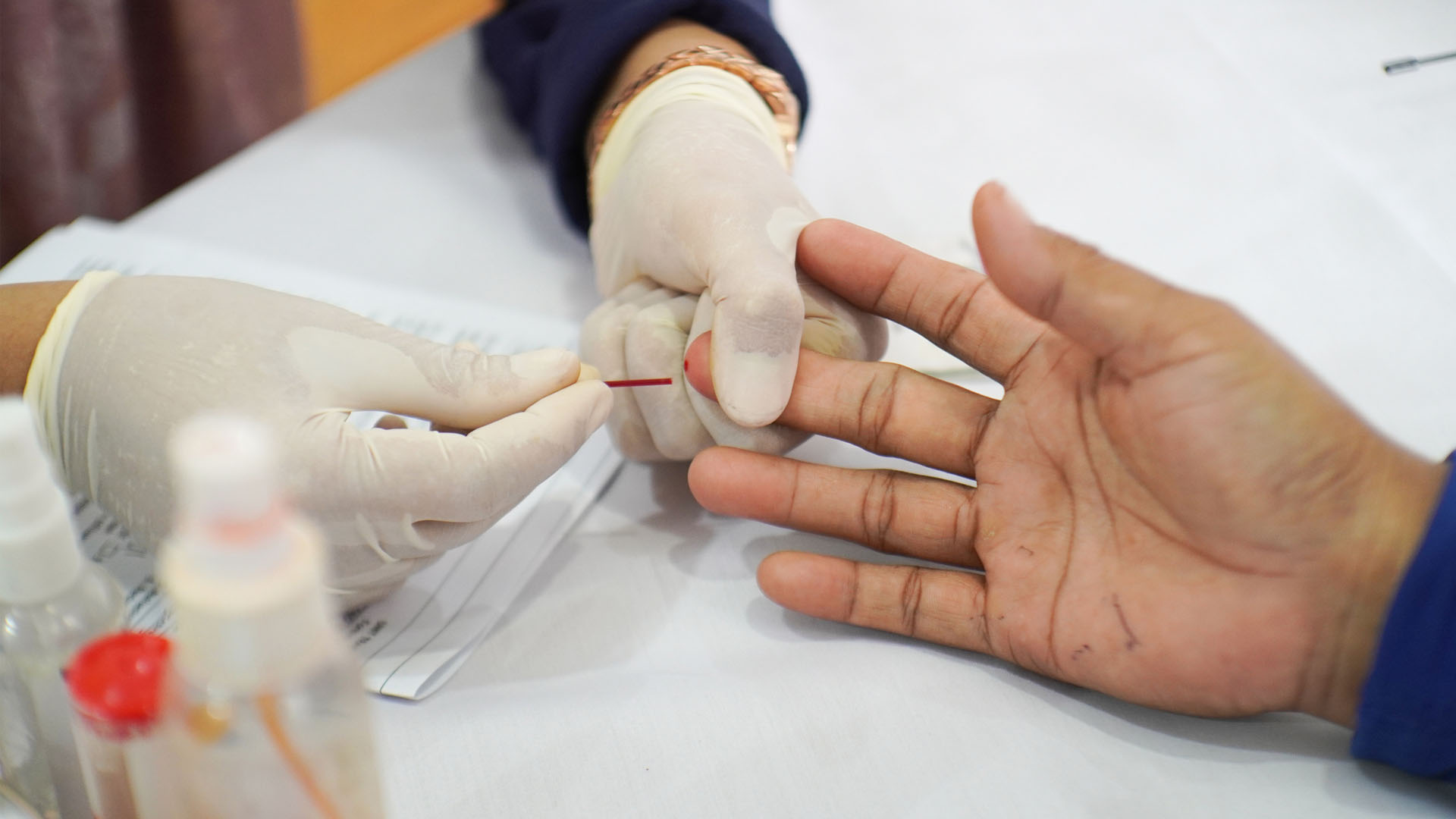9 heart disease risk factors, according to experts
It's the leading cause of death in the United States, but what are the top heart disease risk factors?

Heart disease is the leading cause of death in the United States, accounting for 1 in 5 deaths, according to the Centers for Disease Control and Prevention (CDC). It encompasses a range of conditions, including blood vessel diseases such as coronary artery disease, problems with heart rhythm, and congenital heart defects, according to the Mayo Clinic. Many heart disease risk factors interact with one another: Stress, for example, increases blood pressure, but so do obesity and smoking, which all increase the strain on the heart.
From high cholesterol to a sedentary lifestyle, here are nine things that increase the risk of heart disease.
1. Smoking

Smoking is a significant risk factor and causes 1 in 4 deaths from cardiovascular disease, according to the CDC. Even people who smoke less than five cigarettes a day may begin to show signs of heart disease, according to the CDC. Non-smokers can also be at risk if they are frequently around people who smoke, with more than 33,000 Americans dying each year from heart disease caused by exposure to secondhand smoke, the CDC said.
Smoking contributes to a condition called atherosclerosis, or the buildup of plaques, fat and other substances within the arterial walls, according to the Mayo Clinic. Chemicals in cigarettes can also contribute to arterial inflammation, which further restricts blood flow, according to the CDC.
2. Overweight or obesity

Those who are overweight or obese are more likely to suffer from heart disease, even in the absence of other risk factors such as diabetes or hypertension. But a 2021 review in the journal Circulation found that obesity also increases the risk of developing type 2 diabetes and hypertension (high blood pressure), which are separate risk factors in their own right. It's not completely clear why having a high body mass index (BMI) may increase heart disease risk, but obesity can cause inflammation within the body, which is known to increase cardiovascular risk.
3. A sedentary lifestyle

A sedentary lifestyle (where a person spends too much time engaging in behaviors that expend little energy) can be a risk factor for the development of heart disease, according to the British Heart Foundation (BHF). Regular physical activity can reduce the risk of developing some heart and circulatory diseases by as much as 35%, according to the BHF, by helping to control blood pressure, exercising the heart and helping to manage blood glucose levels.
4. Diabetes

Both type 1 and type 2 diabetes increase the risk of heart disease. Diabetes leads to high levels of glucose in the blood, and over long time periods, such high blood sugar can damage the nerves that control the heart, as well as blood vessels, according to the CDC. Diabetes also increases the risk of high cholesterol and blood pressure, both of which raise heart disease risk, according to the CDC.
Get the world’s most fascinating discoveries delivered straight to your inbox.
5. High cholesterol

"One of the most common types of heart disease is coronary artery disease," said Dr. Daniel Sado, a consultant cardiologist for London Bridge Hospital, part of HCA Healthcare UK, and lead for the cardiac magnetic resonance imaging (MRI) program at King's College Hospital in the U.K.
"It results in your coronary arteries, which supply the heart muscle with blood, [becoming blocked] with fatty deposits known as atheroma," Sado told Live Science in an email. "This can mean that your heart muscle gets less blood than it needs to function properly."

Dr. Daniel Sado is a cardiology consultant and lead for the cardiac MRI program at King's College Hospital, a leading teaching and research facility in London. He is also the cardiology co-lead for long COVID services in South East London and for the myocarditis clinic at King's College Hospital. In addition to general cardiology, Sado has special interests in heart failure, heart imaging, cardiac care in patients with cancer and genetic heart disorders. He is also a consultant cardiologist at London Bridge Hospital, part of HCA Healthcare UK.
Formation of these atheromas is driven by so-called "bad" cholesterol, or low-density lipoproteins (LDL). LDL can build up in the arteries, putting more pressure on the heart by restricting blood flow, according to the CDC.
"High cholesterol" is classified as total blood cholesterol equal to or greater than 200 milligrams per deciliter. However, this is the sum of HDL and LDL cholesterol — readings are also given separately. If a person’s cholesterol is high because of a high HDL number, their health may not necessarily be in danger, according to WebMD. High LDL, on the other hand, may be cause for concern.
6. Genetics

A person’s genes can be a risk factor for cardiomyopathy, a general term for diseases that affect the heart muscle. "There are many different types of cardiomyopathy," Sado said. "Many are genetic in cause. Sometimes the heart muscle is too thick, sometimes it does not contract well or sometimes it becomes stiff and hence finds it difficult to relax when filled with blood."
These diseases can present in many different ways, Sado said.
While cardiomyopathy can’t be cured, there are treatments that can help manage symptoms and reduce the risk of heart failure. According to the BHF, these include reducing alcohol intake, swapping saturated fats for unsaturated fats, getting regular exercise and lowering stress.
Sometimes, the first sign that someone has a genetic cardiomyopathy is sudden death. "This has been seen in high profile athletes and is why many elite sports organizations perform regular heart screens on their members," he said.
7. Sex

One of the most common types of heart disease is coronary artery disease, which causes the deaths of 1 in 8 men and 1 in 14 women in the U.S., Sado said.
According to John Hopkins Medicine, women and men share many heart disease risk factors, but some that relate specifically to women, or can affect women disproportionately, include high testosterone levels prior to menopause, increasing hypertension during menopause, and stress and depression.
Erectile dysfunction (ED) can be an early indicator of whether a man will develop cardiovascular disease, according to a 2013 article in the Arab Journal of Urology. Younger men with ED but no cardiac symptoms at a significantly increased risk, the review noted.
Men also display signs of heart disease on average 10 years earlier than women, according to a 2010 review in the Netherlands Heart Journal.
8. Age

Another risk factor for heart disease that is out of a person's control is age.
"Men typically develop heart disease in their 50s and women in their 60s," said Dr. John Whyte, the chief medical officer at WebMD.
According to the CDC, 2 in 10 people who die of coronary heart disease are less than 65 years old.
9.Stress

Stress may predispose people to face heart problems at a younger age. This may be because stress can cause high blood pressure. In addition, a 2017 paper in The Lancet suggested that when people are stressed, their brain signals to the bone marrow to produce more white blood cells, which in turn leads to overall inflammation of the arteries, restricting blood flow.
This article is for informational purposes only and is not meant to offer medical advice.

Lou Mudge is a health writer based in Bath, United Kingdom for Future PLC. She holds an undergraduate degree in creative writing from Bath Spa University, and her work has appeared in Live Science, Tom's Guide, Fit & Well, Coach, T3, and Tech Radar, among others. She regularly writes about health and fitness-related topics such as air quality, gut health, diet and nutrition and the impacts these things have on our lives.
She has worked for the University of Bath on a chemistry research project and produced a short book in collaboration with the department of education at Bath Spa University.


